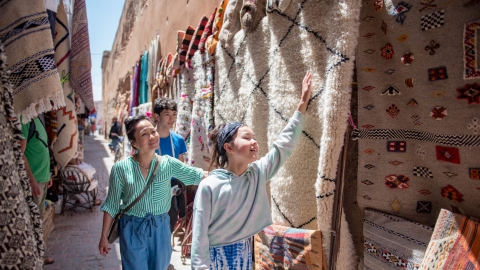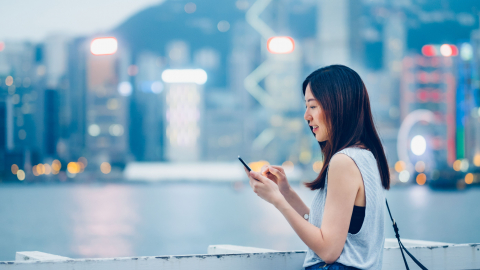A Pew Research survey of 915 policy leaders, scientists, and experts predicted that our daily lives could become more influenced by algorithms and we will start using remote control tools by 2025.
“Everyone is looking forward to new technologies being applied in the travel industry, because this is what makes them feel more confident in every trip they take at the present time,” said Steve Shur, President of the Travel Technology Association. “However, some changes will continue to exist in the future, even when the pandemic is over.”
Here are five technological innovations that emerged during the pandemic that have created major changes in the global tourism industry, according to National Geographic.
1. Virtual reality and augmented reality
As the pandemic halted tourism activities in many parts of the world, museums and tourist attractions turned to augmented reality (AR) and virtual reality (VR) to open exhibitions and create experiential tours online.
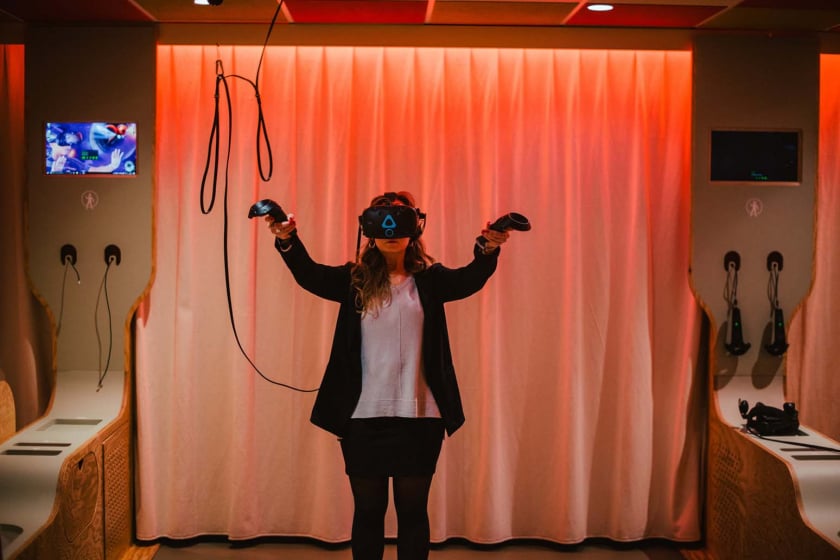
An employee at the Paris Museum of Natural History uses virtual reality (VR) technology to experience evolution. - Photo: The New York Times/Dmitry Kostyukov
Some of the apps that offer this experience include Xplore Petra, launched in June 2020, which allows users to “tour” Jordan’s iconic archaeological site by projecting a miniature version of the entire site on a screen. Or Lights over Lapland, an Arctic travel company, which launched a virtual reality experience that lets users see the Northern Lights firsthand using a computer screen and VR headset.
Virtual and augmented reality can enhance trips by adding experiences, like simulating a climb up the Matterhorn from the Swiss Museum of Transport in Lucerne, or immersing yourself in the “Garden of Earthly Delights” in a 500-year-old painting by Hieronymus Bosch at the Hunt Museum in Limerick, Ireland.
The Paris Museum of Natural History also has an AR exhibit that creates a digital “encounter” between visitors and extinct animals. The National Museum of Singapore has an installation called “The Story of the Forest,” where visitors explore virtual landscapes in nearly 70 nature drawings from the museum’s collection.

Augmented reality (AR) technology makes every tour more interesting, with just a smartphone or a tablet. - Photo: Internet
And many other museums and destinations around the world have applied virtual reality to "survive" the difficult period brought by the pandemic. Of course, virtual reality and augmented reality will not replace travel, but this technology will contribute to making travel experiences more wonderful and useful than the usual trips of the past.
2. Crowd control
To help manage social distancing, many airports and museums have tested or deployed crowd control technology, including the use of robots in public places.
Singapore has installed surveillance robots at its airport gates that detect how crowded the airport is and sound the alarm if people get too close together. When large numbers of tourists arrive at popular destinations, similar methods and devices could be implemented to prevent mass tourism from affecting the local community.
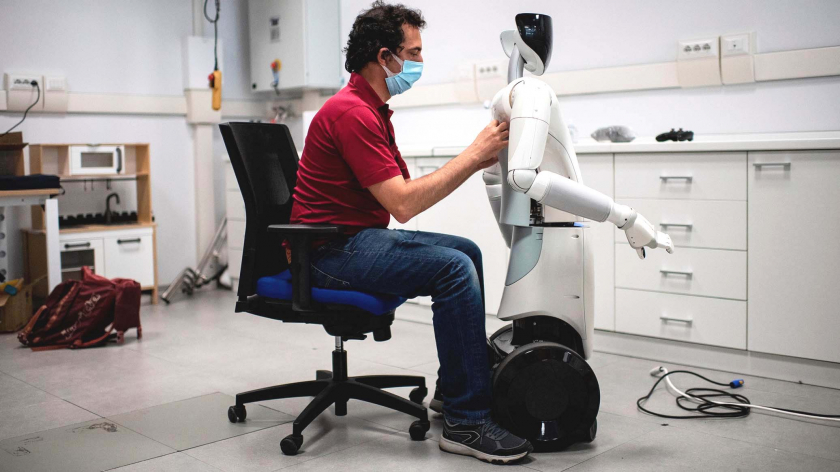
An engineer tests a robot at the Italian Institute of Technology in Genoa in early 2020, which plans to create robots to help tourists at train stations and airports. - Photo: Getty Images/Dan Kitwood
In Venice (Italy), tourists' journeys are tracked using cameras specifically designed for surveillance, and when the pandemic is over, the city also plans to exploit this type of camera to manage the number of tourists and promptly take measures if the city is too crowded.
Amsterdam (Netherlands), which is also struggling with mass tourism, has been tracking visitors through the Amsterdam City Card - a card that pays a fixed fee to visit museums and use public transport in the city.
3. UV-C cleaning
For more than 20 years, UV-C cleaning technology has been used only in hospitals to disinfect and kill viruses. Now, indoor public spaces such as airports, gyms and movie theaters are also using UV-C to prevent the spread of viruses.
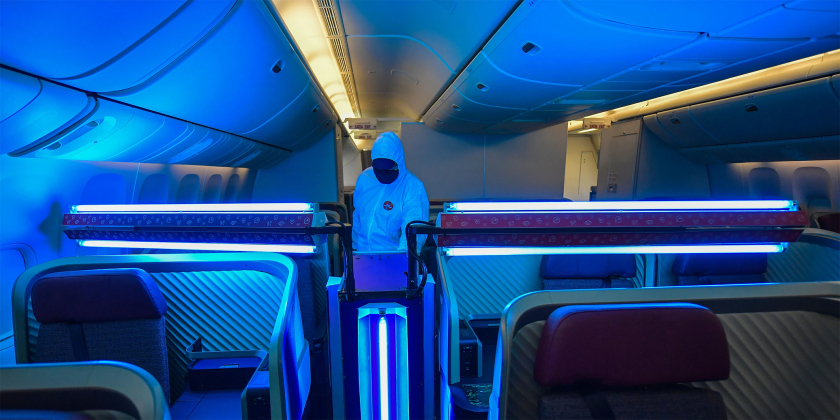
An employee on a LATAM plane inspects a robot equipped with UV-C technology in early 2020. - Photo: Getty Images/Nelson Almeida
UV-C has germicidal properties against Covid-19 and other harmful substances both in the air and on the surface of objects. Depending on the installation location, UV-C will be connected to the HVAC system.(heating, ventilation and air conditioning systems)on escalator handrails, or inside robots equipped with light to disinfect as they move around airports and on planes.
If installed and operated properly, UV-C systems can kill all types of bacteria and germs, even seasonal flu viruses can be destroyed before they spread to many different places.
4. QR code at the restaurant
During the pandemic, many restaurants, eateries and nightclubs have provided QR codes to customers so that they can access menus, order food, and pay their bills without having to hold, handle or exchange directly with their hands. This is considered extremely convenient and may be long-lasting, especially with the increasing shortage of manpower at similar service establishments at the end of the pandemic.

Scanning QR codes to view menus has become popular in many restaurants and eateries. - Photo: Internet
However, such convenience can come at the expense of privacy, as QR codes also have the potential to collect a large amount of information from users. While some QR codes only capture information about food orders, many others mine data such as a patron's dining history, age, and gender, which can be used by restaurants to send their customers coupons or event invitations, or even sell the information to third parties. Worse, someone could use the QR code to hack into a customer's credit card.
To avoid these incidents, Jay Stanley, a senior policy analyst at the ACLU, said the best way is to use your phone to view restaurant menus online or install a protection app like Kaspersky QR Scanner, which will warn users if the QR code they scan is unsafe.
5. Tracking and communication tools
In the past, to identify and track people potentially exposed to infectious diseases like Zika and HIV, public health teams used traditional methods such as calling individuals to ask for personal information regarding their exposure history, and providing counseling, screening, and treatment services to patients.
Now, the pandemic is prompting the deployment of new or more advanced technology to track the spread of the virus and provide more information about the epidemiological history. Apple and Google have also added contact tracing apps to the App Store and CH Play, which will alert users if they come into close contact with an infected person.
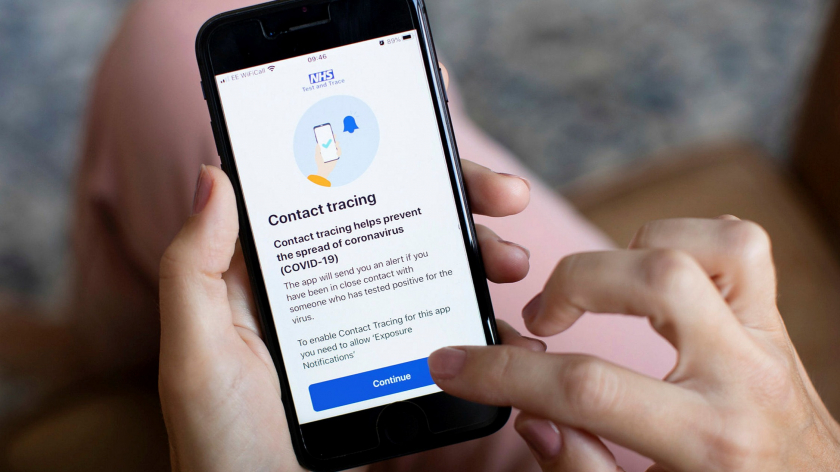
NHS - the testing and tracking app, used by many Europeans. - Photo: Getty Images/Dan Kitwood
Several similar technologies have also been introduced in recent times, such as automated texts, heat maps or even CCTV cameras with facial recognition features, all of which can help track infectious diseases beyond just Covid-19.
If you are traveling or going anywhere during the pandemic, this is an extremely safe way to protect yourself. However, this also means that you will have to rely more on your smartphone and will almost be unable to leave it even on vacation.






















